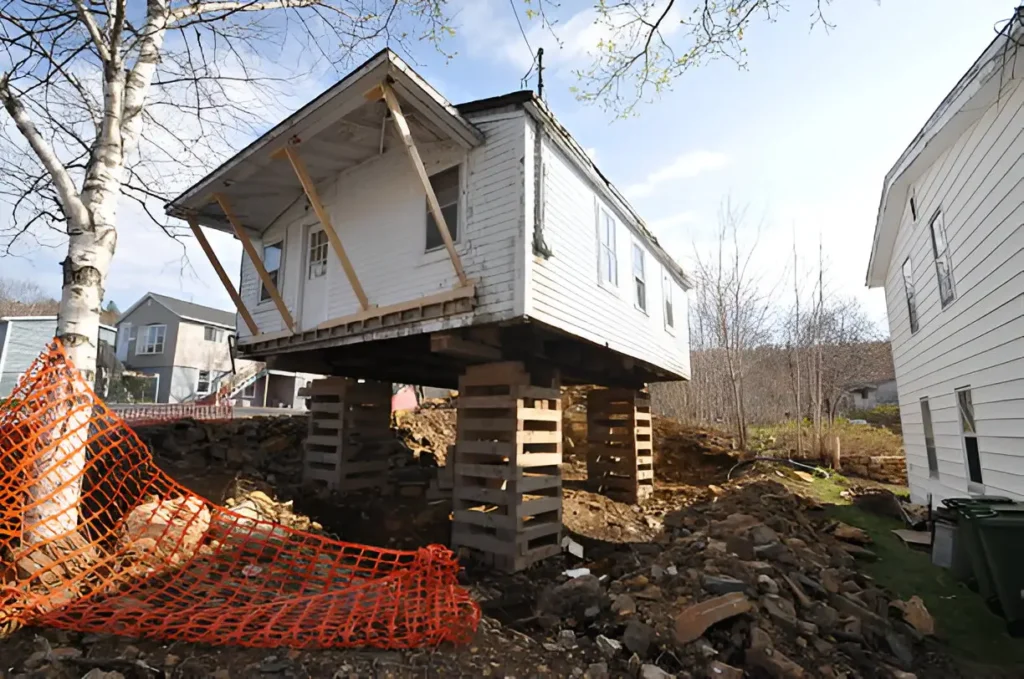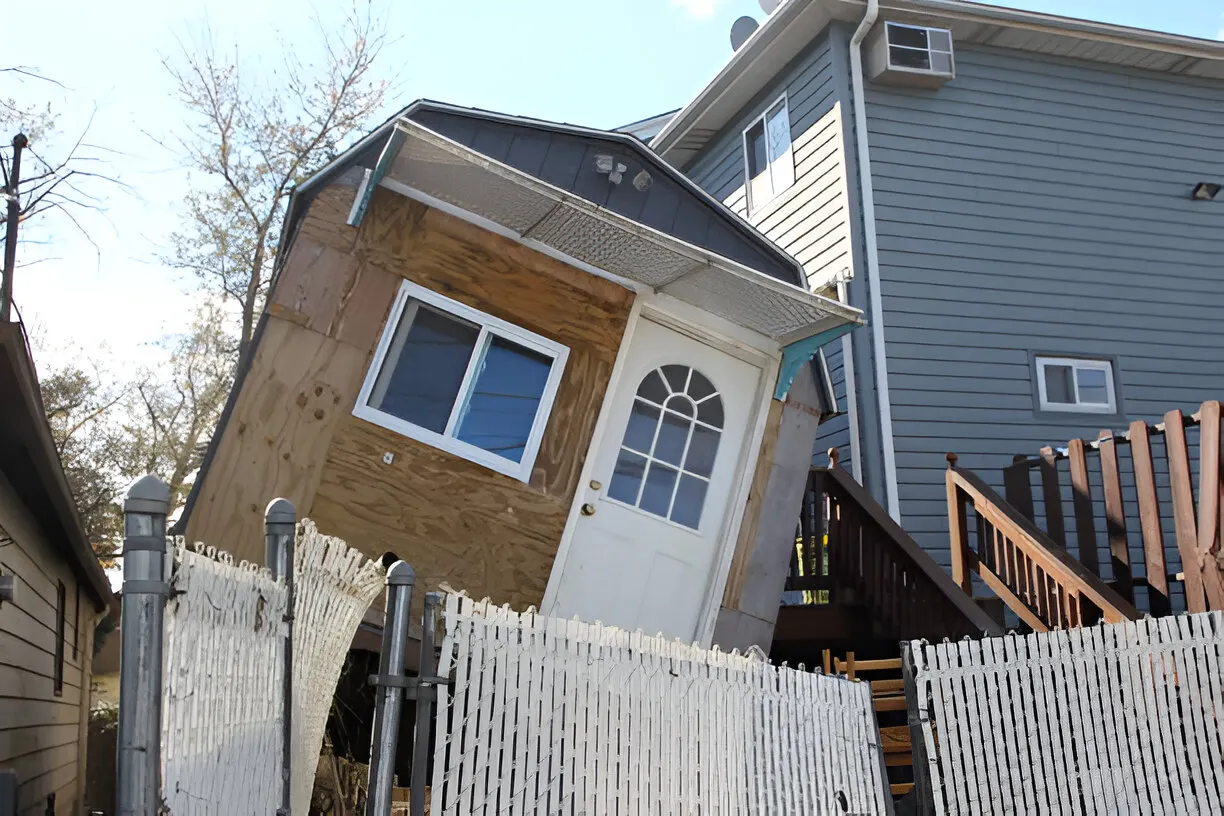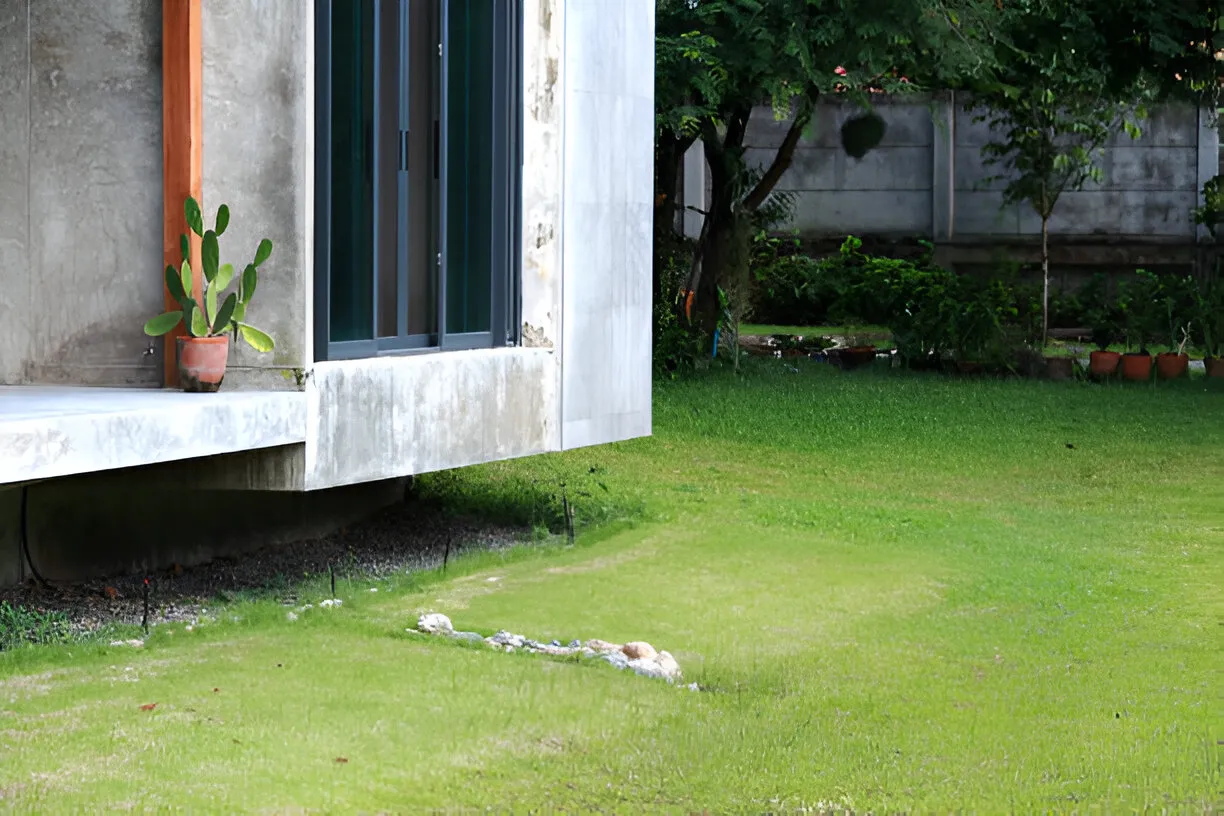You know your home’s rhythms, the way the morning light hits the hallway, the familiar creak on the third stair, the perfect flatness of your kitchen floor. Until one day, you don’t. Part of house feels like sinking into ground. A new, unsettling sensation emerges: a slight but persistent incline, a door that grazes the jamb, a subtle yet undeniable sensation that a part of your house feels like it’s sinking into the ground.
This isn’t a simple matter of an old house settling. This is the hallmark of differential settlement, a structural phenomenon where one portion of your foundation sinks at a different rate than another. For the discerning homeowner, this is a call to action, not a reason for panic. Here at BehindDecor, we delve beyond surface aesthetics to explore the structural integrity that makes beautiful design possible. This definitive guide serves as your forensic manual, empowering you with the knowledge to understand, identify, and address the complex issue of a failing foundation.
The Geotechnical Engine Beneath Your Home: Why Soil Dictates Your Fate
To understand why a part of your house feels like it’s sinking into the ground, you must first understand the ground itself. Your foundation is a transfer mechanism, channeling the immense load of your structure into the earth. The soil is the ultimate bearer of that load, and its properties are the primary determinant of your home’s stability.
A Deep Dive into Problematic Soil Types Across the USA
- Expansive Clays (The “Shrink-Swell” Cycle): Predominant in the Sun Belt (Texas, Colorado, California), the Great Plains, and much of the South, expansive clay soils are the single greatest contributor to foundation distress. Their high plasticity index means they undergo significant volume change with moisture content.
- The Mechanics: Clay particles are microscopic plates. In wet conditions, water molecules surround these plates, forcing them apart and causing the soil to swell (heave). In a drought, the water evaporates, the plates draw closer together, and the soil shrinks and cracks.
- The Impact: This constant, cyclical heaving and shrinking creates immense pressure on foundation slabs and footers, leading to cracking, upward movement (heaving), and, most commonly, the sinking sensation as the soil support contracts away.
- Poorly Compacted Fill Soil (The Construction Deficit): Many homes are built on sites where the natural topography was altered using “fill” soil, dirt brought in from another location. If this fill soil is not mechanically compacted in strict, engineered lifts during construction, it will be prone to consolidation under the structure’s weight over time. This creates a void, allowing that specific part of your house to feel like it’s sinking into the ground as the uncompacted soil beneath it densifies.
- Silty Soils and Liquefaction Risk: Common in river valleys and floodplains (e.g., parts of the Mississippi Valley, California Central Valley), saturated silty soils can lose their shear strength and behave like a liquid during seismic events or extreme saturation, a process known as liquefaction. This can lead to rapid and severe settlement.
Hydrogeology: How Water Mismanagement Destabilizes Your Foundation
Water is the agent that activates the soil’s destructive potential. Its mismanagement is a primary cause of differential settlement.
- Erosion: The Silent Subsurface Culprit: A leaking pool, a broken irrigation line, or a compromised sewer pipe can act like a subterranean river, silently transporting soil particles away from your foundation. This process creates voids—empty spaces where soil once was. When the foundation can no longer bridge these voids, it cracks and sinks into them. The tell-tale sign is often a sudden onset of sinking, frequently localized near the source of the water.
- Moisture Differential: The One-Sided Drought: This is a more subtle yet equally destructive process. Imagine one side of your house is shaded and retains moisture, while the other side is baked by the afternoon sun and parched by the roots of a large tree. The clay on the dry side shrinks significantly, while the moist side remains stable. This drastic difference in soil moisture content directly under different sections of the foundation is a classic recipe for causing one part of your house to feel like it’s sinking into the ground relative to the other.
Advanced Diagnostic: Beyond the Sloping Floor
While a sloping floor is a primary symptom, a professional investigation looks for a constellation of evidence to pinpoint the cause and severity.
Quantifying the Problem: The Tools of the Trade
- Precision Level Monitoring: Professionals use laser levels or sophisticated water levels (which use the principle of water seeking its own level) to map the exact elevation changes across your foundation, creating a topographical map of your floor’s deviation.
- Crack Monitors: These simple devices, glued across a crack, have a graduated scale that precisely measures whether the crack is widening, narrowing, or shearing over time. This data is crucial for understanding if the movement is active or historical.
- Structural Engineer’s Assessment: This is non-negotiable. The engineer will correlate all visual evidence, perform calculations on soil load-bearing capacity, and prescribe a specific, engineered solution. They are the unbiased expert whose report protects you.
The Exterior Tell-Tale Signs: Reading Your Home’s Façade
- Rotation vs. Bowing: It’s critical to distinguish between a wall that is bowing inward (often a sign of lateral pressure from saturated soil) and a wall that is rotating (tilting outward at the top, a classic sign of downward settlement of the exterior footing).
- Diagonal Brick Cracks: Look for stair-step cracks in brick veneer. These almost always follow the mortar joints and directly indicate foundation movement beneath.
- Separation at Additions: Gaps between the main house and a garage or porch addition are glaring red flags, indicating the two structures are moving on separate foundation systems with different soil conditions.
The Engineering Arsenal: Modern Solutions for a Sinking Foundation
Gone are the days of simply jacking up a house with timbers. Modern foundation repair is a field of precision engineering.
H3: The Gold Standard: Underpinning with Steel Piers
This process involves driving structural elements deep past the unstable, active soils into a competent load-bearing stratum (like dense sand or bedrock).
- Helical Piers: These are giant, galvanized steel screws. They are torqued into the ground; the installation torque directly correlates to their load-bearing capacity. This makes them ideal for situations where deep, stable soil is needed without the vibration of driving piers. They can be installed with limited access and offer immediate load-bearing capacity.
- Resistance (Push) Piers: These steel pipe sections are hydraulically driven into the ground using the weight of the structure itself. Once they reach predetermined refusal (the point where they won’t go deeper), a hydraulic jacking system is used to lift the foundation back to its original position before locking it in place. This system is renowned for its incredible load capacity (often over 50,000 lbs per pier).
The Misunderstood Solution: Slabjacking (Mudjacking)
This process involves pumping a grout mixture (often a cementitious slurry or expanding polyurethane foam) beneath a sunken concrete slab. It is a cosmetic and temporary solution for sunken sidewalks, patios, or driveways. It is not a permanent structural solution for a sinking foundation. It does not address the underlying soil problem and does not provide deep, lasting support. Polyurethane foam is more advanced than sand slurry, but it still only fills voids and does not transfer the structural load to a stable depth.
BehindDecor’s Advanced FAQ: Technical Questions Answered
What does it mean if my bottom feels graded?
A leaned bottom frequently signals discriminational agreement, where one part of your foundation is sinking faster than another, and requires professional assessment.
Is some house settling normal?
Yes, minor invariant settling is normal originally. Still, ongoing uneven sinking is a structural issue that needs disquisition.
What is the main cause of a sinking foundation?
The primary cause is unstable soil, like extensive compaction that shrinks during failure or inadequately compacted filler soil that settles.
How critical is a sinking foundation?
It’s critical to act swiftly. Progressive sinking will not stop on its own and will lead to more severe structural damage.
Who should I call first, a mastermind or a contractor?
Always call a structural mastermind first for an unprejudiced opinion. Also, contact estimable form contractors for quotations on the prescribed result.
Will homeowner’s insurance cover the form?
Generally, no. The utmost standard programs count damage from settling, shifting soil, or foundation movement unless it’s caused by a specific covered pitfall.
Can I help my foundation from sinking?
Proactively manage water, ensure proper drainage, grade soil down from your home, and maintain gutters to control humidity around the foundation.
Conclusion: From Crisis to Confidence
The feeling that a part of your house feels like it’s sinking into the ground is a clear signal from your home that a abecedarian equilibrium has been disrupted. It’s a complex interplay of geotechnical engineering, hydrogeology, and structural mechanics.
Addressing it successfully requires a regular, knowledge-grounded approach moving from original observation to professional engineering opinion, and eventually to the perpetuation of an ultramodern, endless form result. It’s a significant investment, but it’s an investment in the veritably base your home stands on, the ultimate foundation for the safety, value, and beauty of your living space.
At BehindDecor, we believe that true comfort and style are erected upon a platform of security and knowledge. Understanding the forces at play beneath your bases is the first step toward restoring not just your foundation, but your total peace of mind.




